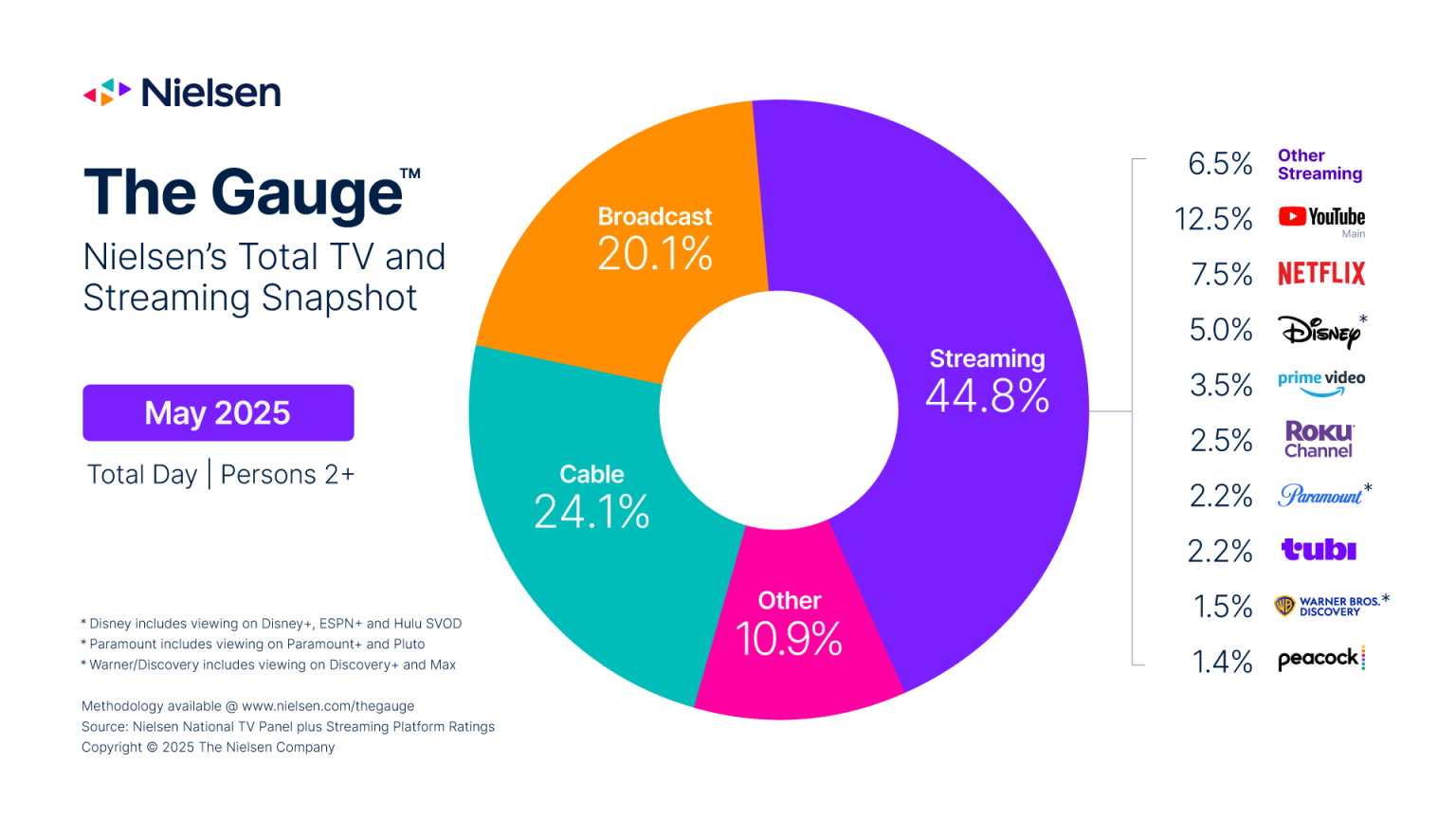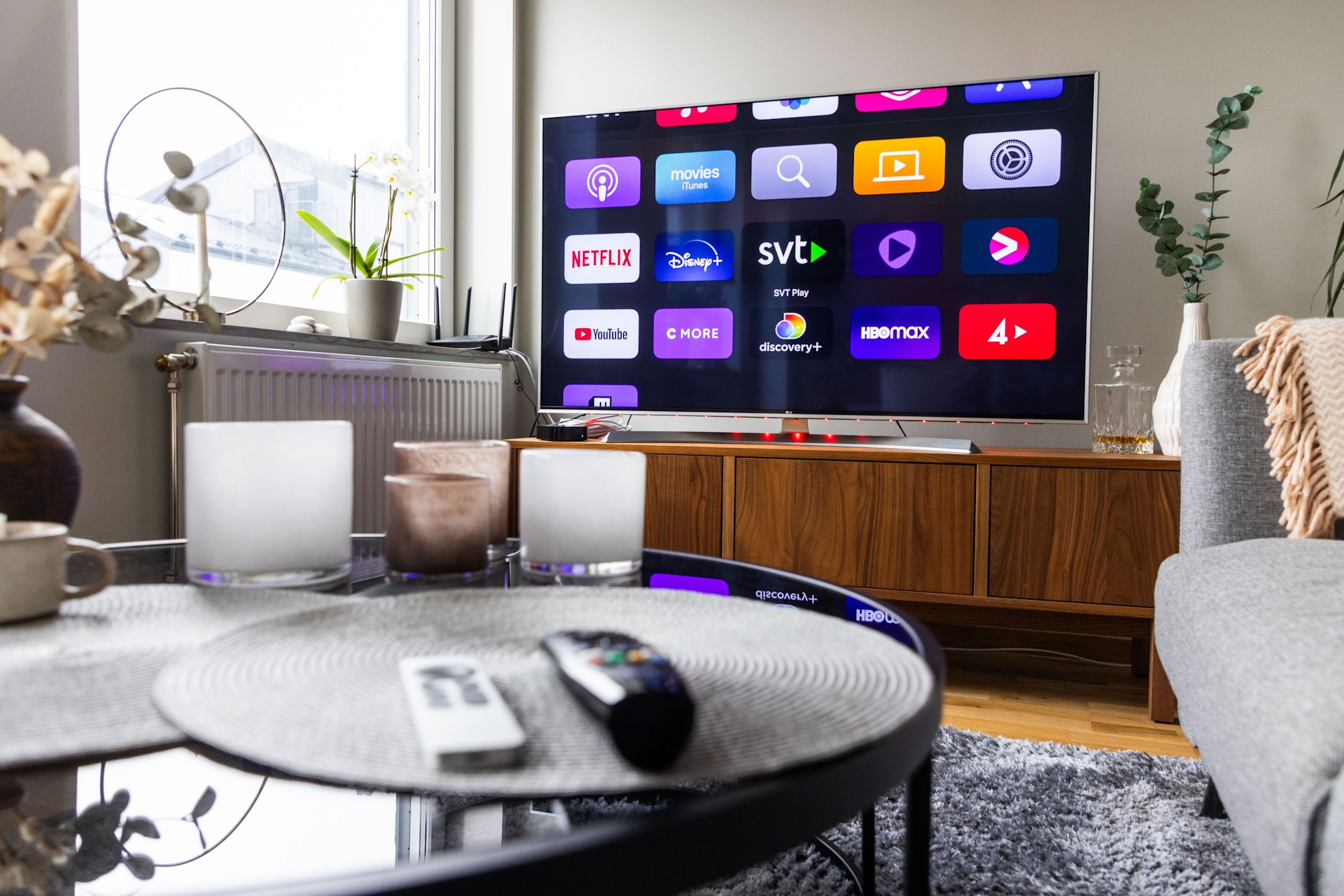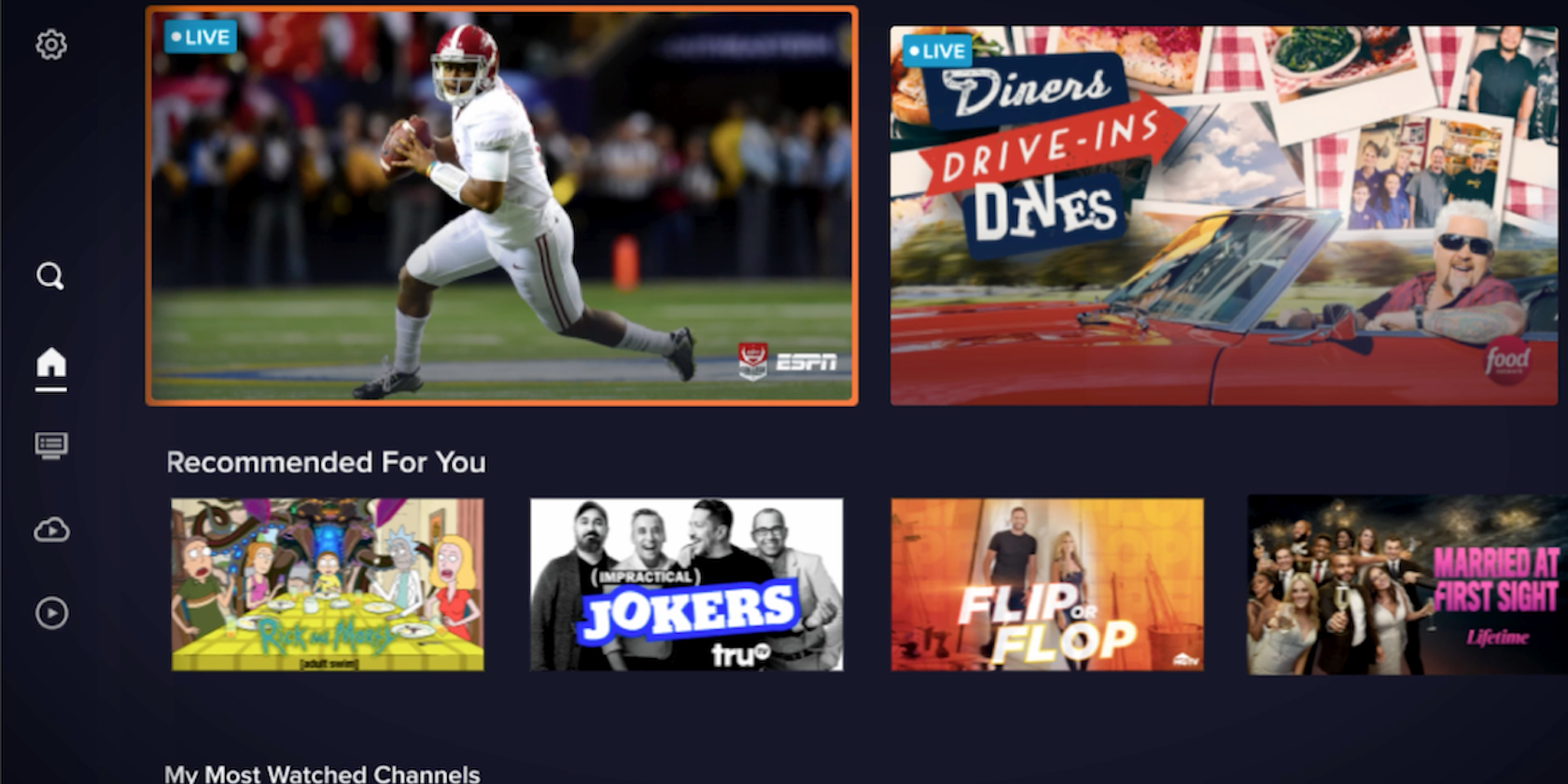Streaming just passed a major milestone: in May 2025, it officially overtook cable and broadcast combined. It’s the kind of moment that should feel like a victory lap for cord-cutters. And yet, as someone who ditched cable years ago, I’ve started feeling something I didn’t expect—I kind of miss it.
Streaming Has Officially Overtaken Cable and Broadcast TV in Viewership
We’ve finally reached the tipping point. For the first time in television history, streaming has officially surpassed traditional TV viewing. According to Nielsen’s report, streaming now accounts for 44.8% of total TV viewership as of May 2025, while broadcast and cable combined only make up 44.2%. It’s a slim margin, but it’s a historic one.
However, I feel a little conflicted. This is what we’ve all been predicting for years, right? The inevitable death of cable, the rise of on-demand everything, and the future where we’re in complete control of what we watch and when we watch it. Streaming usage has exploded by 71% since 2021, while cable viewing has dropped by 39%. The numbers don’t lie—we’ve collectively voted with our remote controls and our wallets.
Netflix continues to dominate the streaming landscape, maintaining its position as the top streaming service for four straight years. The platform even managed to break streaming records with its exclusive NFL games on Christmas Day 2024. Meanwhile, YouTube has become an absolute juggernaut, representing 12.5% of all television viewing in May.
In other words, the era of flipping through channels is officially being drowned out by algorithms, on-demand menus, and autoplay previews. And really, that’s an impressive milestone. But while everyone else is toasting the end of cable, I’ve found myself wanting it back.
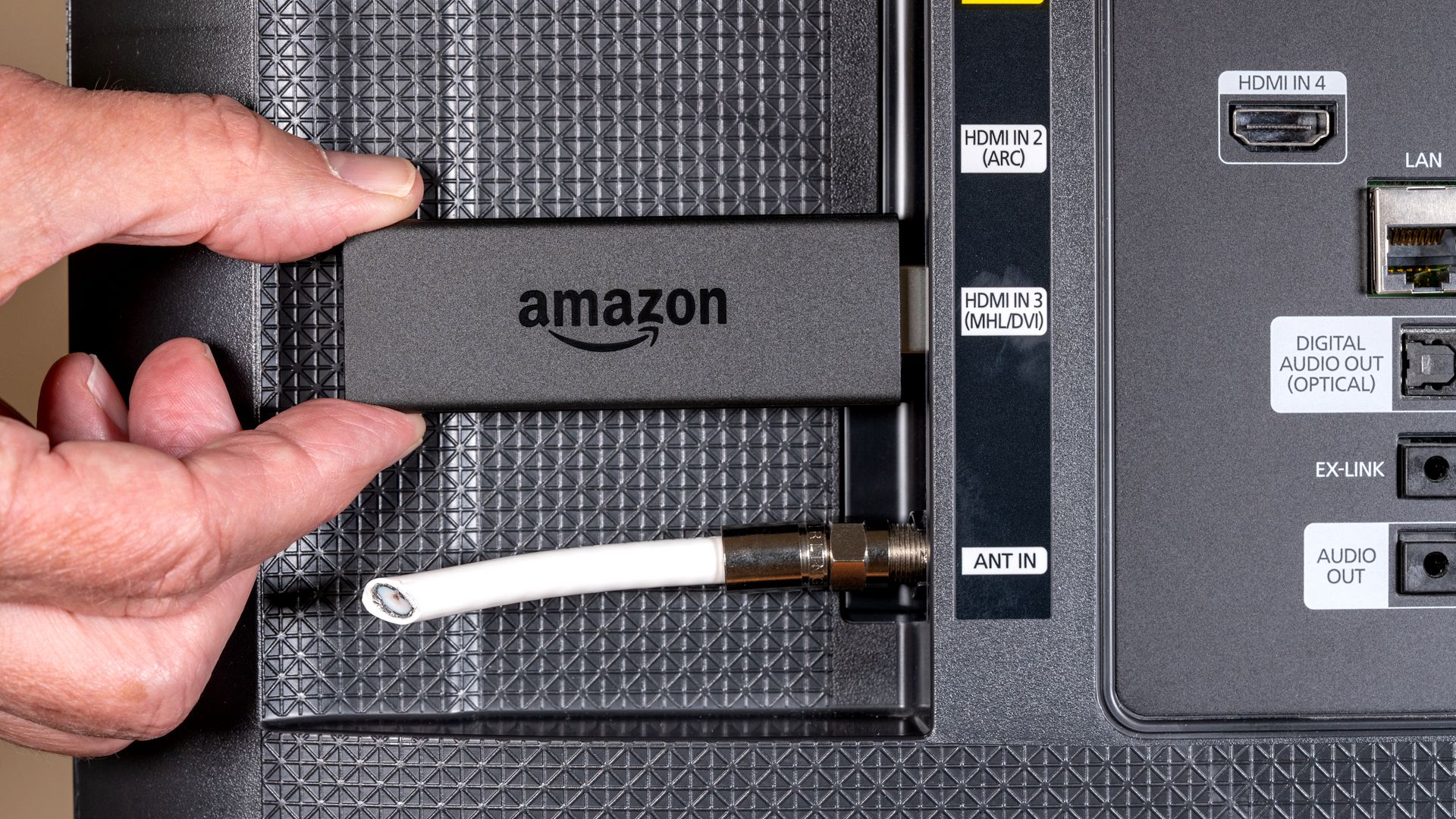
Related
Cutting Cable Changed Everything: 4 Unexpected Benefits l Loved
If I could go back in time, I would have cut cable sooner.
Not because I think cable was better, but because streaming—ironically—has started to feel like more work.
The Fragmentation of Streaming Has Turned Choice into a Chore
Remember when Netflix was just Netflix? When you could reasonably expect that most shows and movies would eventually end up there? Those days feel like a distant memory. Today’s streaming terrain has fractured into what feels like dozens of different services, with each one trying to carve out its own piece of the entertainment pie.
The Nielsen report mentions that the list of streaming platforms with significant viewership has expanded from five services in 2021 to eleven in 2025. That’s more than doubled in just four years. Netflix, YouTube, Hulu, Prime Video, Disney+, Paramount+, Peacock, Max, Apple TV+, and the growing list of free ad-supported services like Pluto TV, Roku Channel, and Tubi. To me, that is overwhelming. That’s eleven apps, eleven interfaces, eleven subscriptions—and, in theory, eleven different shows you’re half-watching at once.
What was supposed to simplify our viewing experience has become a complex puzzle. I find myself spending more time deciding what to watch than actually watching. First, I have to remember which service has which show. Then I have to figure out if I’m still subscribed to that service. Then I have to decide if it’s worth subscribing to yet another platform for just one show I want to watch.

Related
How to Check Which Movies Are Available to Stream
Want to know if your favorite movies or TV shows are available to stream? Here are several tools that make it easy to check.
The “Netflix Effect” mentioned in the report—where shows become bigger hits after moving to Netflix—perfectly illustrates this chaos. Shows like Suits and Young Sheldon found new audiences on Netflix even though they originally aired elsewhere. But as a viewer, this just adds another layer of confusion. Where did this show originally come from? Where can I watch it next month? Will it still be there?
Free Streaming Services Are Growing Fast—But They Feel a Lot Like Cable
Here’s where things get really ironic: the free ad-supported streaming services (FAST) are booming. Pluto TV, Roku Channel, and Tubi combined represent 5.7% of total TV viewing—more than any individual broadcast network. These services are growing because they’re free, but they’re also growing because they offer something that feels familiar: the ability to just turn on the TV and have something playing.
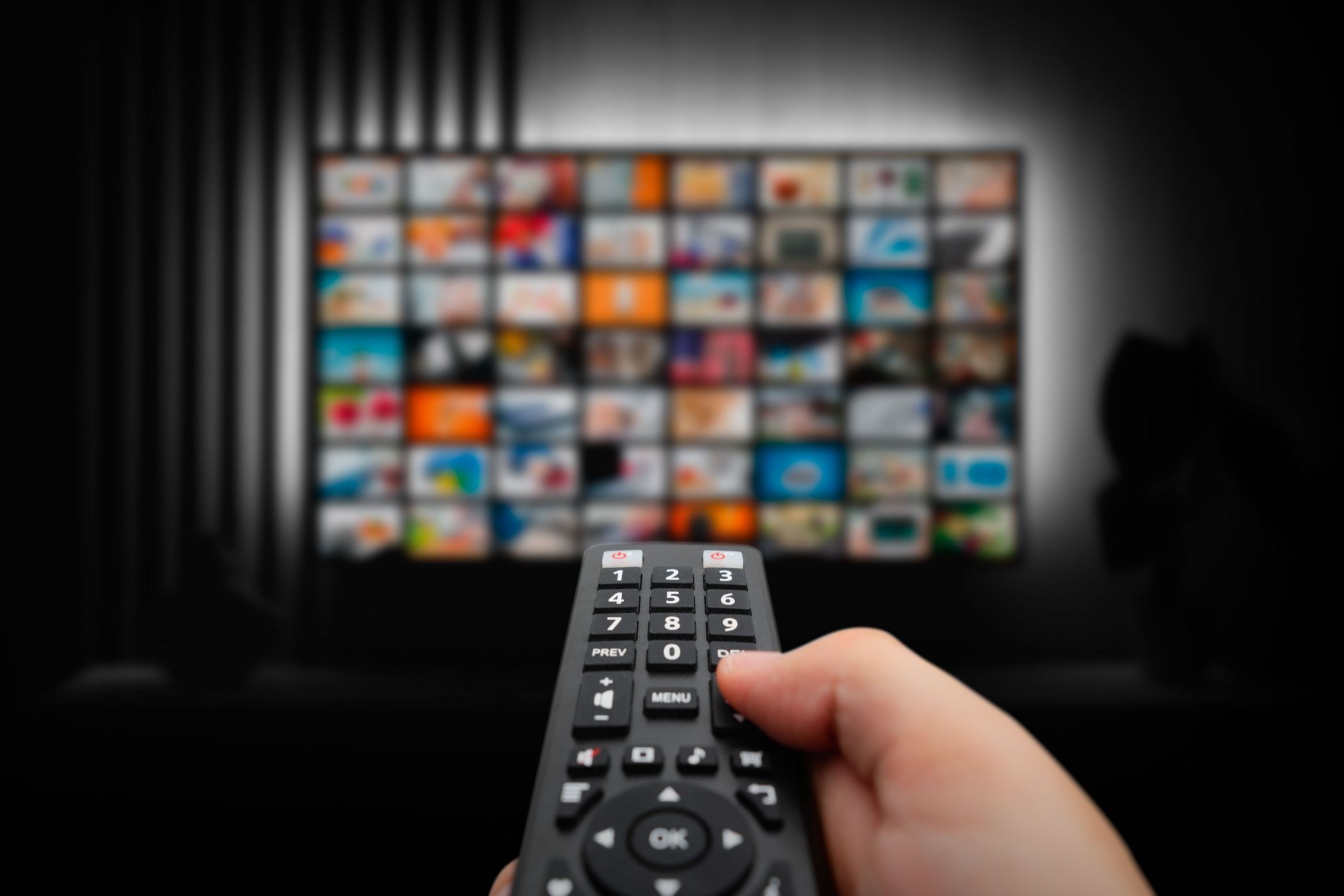
Related
I Tried Free Ad-Supported Streaming TV, and I Might Cancel Netflix
FAST streaming services have become quite popular, and now I can see why.
But in my opinion, these services are just cable TV with extra steps. You’re still watching ads, you’re still limited to what’s being programmed for you, and you’re still dealing with content that cycles in and out based on licensing agreements. The main difference is that you access it through an app instead of a cable box.
I’ve caught myself using these services more and more lately, and it’s not because the content is necessarily better. Sometimes, I just want to turn on the TV and have something playing without having to make a decision.
Live Events and Sports Still Feel Better on Cable
Despite all the advances in streaming technology, there’s still something that traditional TV does better: live events. By the way, streaming services are getting into live sports—Netflix’s NFL games and NBC’s Olympics streaming on Peacock are good examples—but the experience still feels different.
There’s a communal aspect to watching live TV that streaming hasn’t quite captured. When everyone in your neighborhood is watching the same football (please don’t call it soccer) game at the same time, when you can text your friends about a commercial during the Super Bowl knowing they just saw it too, when you can participate in real-time social media conversations about a live event—that’s something that gets lost when everyone is watching across different platforms and have to battle with lag and buffering issues. And sometimes, the whole app may just crash under pressure.
Streaming has also made us impatient. We’re so used to binge-watching entire seasons that waiting a week between episodes feels archaic. But there was something to be said for appointment television, for having to wait, for the anticipation and the shared cultural moments that came with everyone watching the same thing at the same time.
I Still Want Cable TV Back
I know this might sound crazy, especially from someone who cut the cord years ago, but I’m starting to miss cable. It is not the overpriced bundles, the terrible customer service, and the endless channels of infomercials, but the simplicity of it.
With cable, you turned on the TV and flipped through channels until you found something to watch. You didn’t have to remember passwords, worry about whether your internet connection was fast enough, manage multiple subscriptions, or research which platform had the show you wanted to watch.
The Nielsen report suggests that streaming’s dominance over traditional TV might be temporary, shifting back and forth depending on the season and what’s available. Part of me hopes that’s true. Not because I want streaming to fail, but because I think there’s room for both models to coexist.
Maybe the future of television isn’t about one format completely replacing another. Maybe it’s about finding the right balance between choice and simplicity, between control and convenience, between the future and the familiar comfort of just turning on the TV and letting someone else decide what you’re going to watch tonight.
Until then, I’ll be over here scrolling through six apps, trying to remember where I left off on that one show. You know the one. It had a guy. Or maybe a dog. Never mind.

